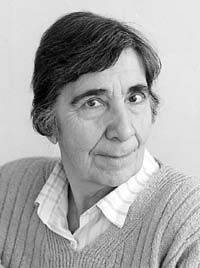Autumn In Sofiyivka

If you come to Uman’s Sofiyivka Arboretum for the first time, it seems to be very large and secluded like a Universe-wide spiral. What gives one this impression is the park’s rich greenery and quaint terrain with its numerous lakes, brooks, waterfalls and trails that lead to unknown places, rocks, and valleys. You are also impressed by a certain anomaly in the landscape, when the natural order seems to be broken, with the biggest pool being atop the garden and the “mountains,” i.e., pieces of rocks, being at the bottom. In a quarter of an hour or so the “traveler” goes from rocky cliffs to a glade surrounded by the oak wood, or he finds himself on a narrow path between the rocks after leaving the wide valley. What comes as a great surprise after the steep amphitheater-like structure is a large Lake Verkhnie, a center of aquatic amusements that attracts lots of people to its beaches, locks, and cute old-fashioned paddle steamers. And the Kamyanka River flows under numerous romantic-looking bridges. The landscape park has a great many picturesque places. Especially memorable is a big glade surrounded by what looks like columns of oaks spattered with myriads of playing sunbeams. In the middle stands an old gigantic oak (thick enough for five men to extend hands around it) with a perfect dark-green, almost blue in the sunshine, crown. One considers it a great privilege to sit under this tree for a while, especially in the evening, when the oak grove is lit by rays that show off the yellow leaves.
The Sofiyivka Park was laid out at the turn of the nineteenth century by Polish magnate Stanislaw Potocki, who owned Uman lands, for his wife Zofia Wittowa-Potocka. Once, when they were walking by the river that flowed down the deep valley, the illustrious lady allegedly said, “I think there might be such a beautiful garden here!” And four years later the “Uman wonder”, one of the best landscape parks in Europe, was emerging by the Kamyanka. Hundreds of trees and bushes, as well as the soil, were brought here from the Crimea, Italy, England, and from the prince’s numerous estates. The emerging terrain was gradually strewn with large mirror-like lakes, waterfalls, sources and fountains. What actually created the park was Potocki’s love for the “fairest Fenerian”, as Zofia Potocka was called, for she spent her childhood in Istanbul’s Greek quarter Fener.
Zofia’s Greek origin plus the then vogue was the reason why Sofiyivka became an illustration, if not a manual, of Ancient Greek and Roman mythology. One can see the Styx River here, the Tarpean Rock, the sculptures of many Ancient Greek heroes, writers, and philosophers. The hostess often dressed up as Flora, Venus or Helen of Troy to receive the noble guests flocking there from all over Europe.
After the Potockis had died, Sofiyivka became the property of the count’s son, Aleksander. The latter took part in the 1830-1831 Polish uprising. All the Potockis’ estates were confiscated in favor of the Russian state. Sofiyivka was renamed Tsar’s Garden and placed under authority of the Cantonments Department. The times of Nicholas I saw the construction of a tower at the park entrance, a few classical pavilions, and the installation of a wrought-iron dragon on the main fountain. Still later the park was again renamed as Third International Garden. Since 1955 it has been known as the Arboretum of the National Academy of Sciences of Ukraine.
Today, the park is being kept in quite a decent condition: it is clean and abundant in flowers. Most of the lawns are not hosed down, however, much to the detriment of Sofiyivka in the fall. One can feel the veneer of provincialism in, for example, the obvious propensity to gaudy colors, cheap ornaments, gazebos, and pavilions. What also seems superfluous is the number of park sculptures of not the best, to put it mildly, quality, for they are “copies of the copies” of classical originals. It is also bad that the park’s numerous lakes, ponds and streams are filled today with far-from-clear water. These isolated drawbacks cannot offset, however, the obvious desire of experts to keep up to the park founders’ high taste and preserve, as far as possible, what has been left after a chain of uprisings, wars and revolutions, when Sofiyivka kept changing hands. Even the spirit of commerce has been kept out of the park — a rare case indeed!
In the past 200 years, Sofiyvka has been shrouded with a host of legends. One of them is the image of an inimitable and sinister femme fatale, the Greek-born beauty Zofia, who, like Homer’s Circe, could easily and willingly turn men into pigs. Sometimes Zofia’s specter haunts the park’s various nooks and corners and allegedly settles in careless young men (which is quite probable). There are other tales also. Word has it, for example, that if somebody is bold enough to spend a night in one of the park’s dark and moist grottos, he is sure to be visited by an ancient soothsayer (perhaps Cassandra or Sybil of Cuma) who will foretell his future in every detail. There have been very few volunteers so far, which is quite clear: it will be the hell of a life if you know everything in advance and in all details to boot. I personally prefer a story about the above-mentioned gigantic oak-tree. People in the know say it irradiates a great vital energy, and this energy grows in the geometric progression as the tree gets older. If you sit down on the ground, with your back pressed to the tree’s majestic trunk, and stay like this all through the day and night time, you can accumulate quite a large reserve of pure oak power in your miserable body. I wished I could sit over there, but it was time to go back to the editorial office for our anniversary celebrations.






